The Solar System
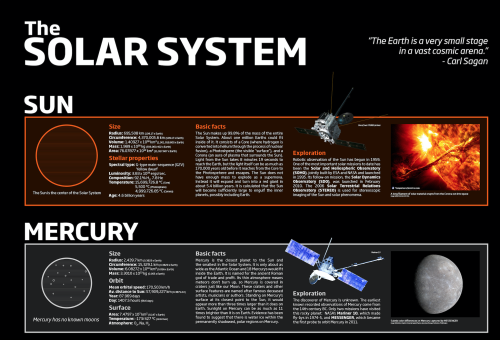
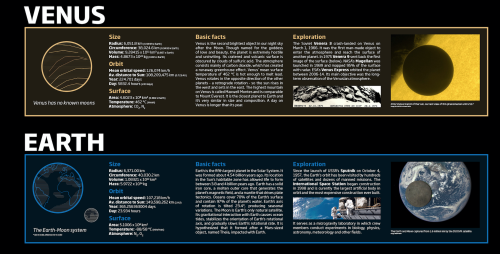
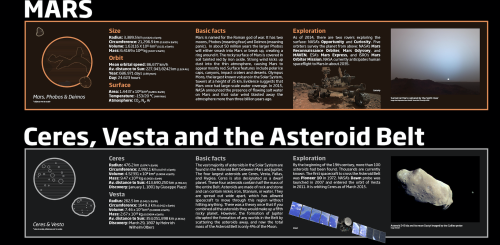
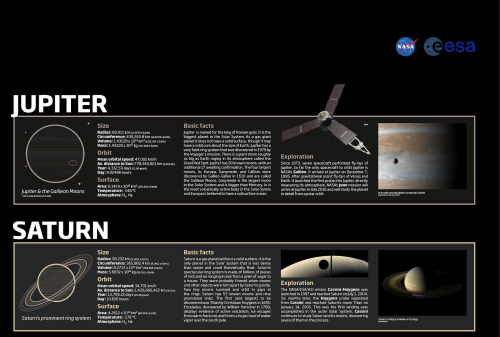
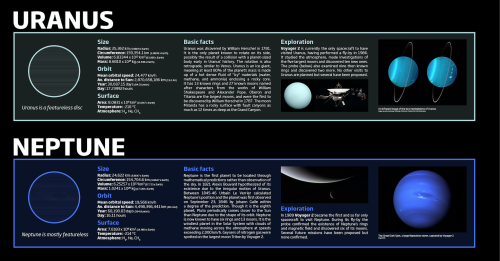
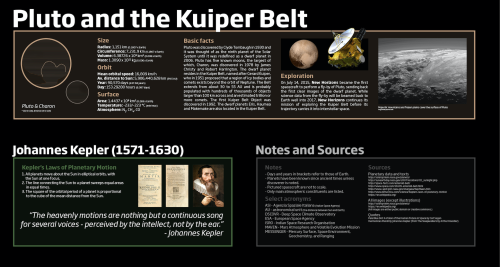
The Solar System
More Posts from Inter-stellxr-blog and Others






Mostly Mute Monday: The Glory of Saturn’s Rings
“Saturn is remarkable in a number of ways; among all the planets we know of, it’s the least dense, and also the only one with a spectacularly visible set of rings. Composed of icy, dust-like material, these rings are not solid at all, but made up of particles that pass each other, stick together briefly and then fly apart once again.
Snowballs and planetesimals coalesce, only to be torn apart by tidal forces exerted by Saturn and its passing moons. Gaps in the inner rings are caused by the gravitational presence of moons themselves, while many of the outer rings — like Saturn’s E-ring, below — are actually caused by the moons themselves.”
From their discovery in the 1600s, Saturn’s rings have been a source of wonder and puzzlement to skywatchers everywhere. The only ring system visible through most telescopes from Earth, Saturn’s main rings at more than 70,000 km long, yet no more than 1 km in thickness. Once thought to have only two gaps in them, the Cassini spacecraft has revealed over a thousand, teaching us that Saturn’s rings are likely as old as the planet itself, and will likely continue to exist for as long as our Sun shines.

The moon through my RC-16 http://space-pics.tumblr.com/ source:http://imgur.com/r/Astronomy/5fUyf89

There Will Be A Supernova In The Sky In 2016
A supernova will appear in the sky in the first few months of 2016, according to astronomers working on the Hubble Space Telescope. The prediction is possible because they first saw the star explode in 2014 in a gravitationally lensed galaxy, which will make it visible again next year.
Gravitational lenses happen when a massive object (or objects such as a cluster of galaxies) magnifies and distorts the light of background galaxies. In this case, the galaxy cluster is so massive that it deforms space and time so that it acts like a gigantic magnifying glass.
Sometimes, these distortions produce multiple images of the same object. Although they belong to the same galaxy, the images we see were not emitted at the same time. Because light travels at a finite speed, photons will take a different amount of time to travel around the massive object depending on the path they follow – with some routes taking longer than others.
The supernova explosion that we will see in 2016 is a re-run of the 2014 one, known as the Refsdal Supernova. It was generated in a galaxy nine billion light-years away, and the lens is created by a massive galaxy cluster, called MACS J1149+2223, five billion light-years from us.
Read more ~ IFL Science
Image: This image shows the appearance of the Refsdal Supernova. The middle circle shows the predicted position of the reappearing supernova in early 2016. Credit: NASA/ESA/HST
![Milky Way Seen From The Moon, Err, Death Valley [OC][3648x4713] Http://space-pics.tumblr.com/](https://64.media.tumblr.com/2d63dc9dc866adb34f4da686b954e1ad/tumblr_nyeexqjys01rcl722o1_500.jpg)
Milky Way seen from the Moon, err, Death Valley [OC][3648x4713] http://space-pics.tumblr.com/

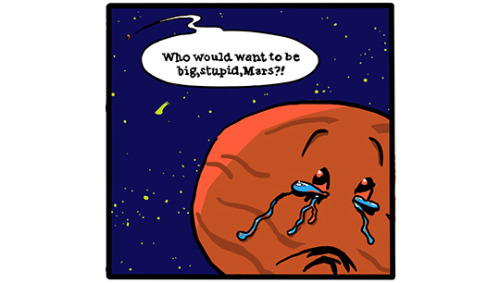
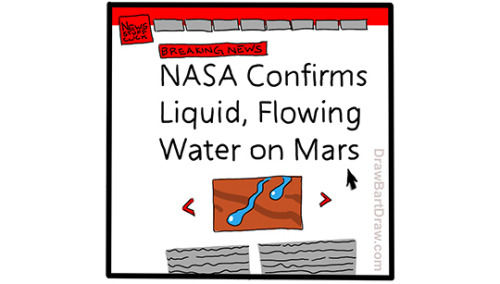
by Draw Bart Draw



May 1, 1979 – The prototype Space Shuttle Enterprise rolls out from the Vehicle Assembly Building at Cape Canaveral in Florida.
(NASA/Kennedy Space Center)
Were Troy’s walls not built by Gods? Was Rome not made by two twin half-blood gods? QUESTION: What do they both have in common? ANSWER: They both fell.
the gods like to make things that collapse // L.H.Z (via lhzthepoet)







-
 foxyshriek reblogged this · 1 year ago
foxyshriek reblogged this · 1 year ago -
 knightinwaiting liked this · 2 years ago
knightinwaiting liked this · 2 years ago -
 t-nvy liked this · 3 years ago
t-nvy liked this · 3 years ago -
 bertdude reblogged this · 6 years ago
bertdude reblogged this · 6 years ago -
 aircastle-ukr liked this · 6 years ago
aircastle-ukr liked this · 6 years ago -
 g0ldenretr1ever reblogged this · 6 years ago
g0ldenretr1ever reblogged this · 6 years ago -
 carbonica3ch liked this · 6 years ago
carbonica3ch liked this · 6 years ago -
 wetbabesusan liked this · 6 years ago
wetbabesusan liked this · 6 years ago -
 andreashouseofrandom reblogged this · 6 years ago
andreashouseofrandom reblogged this · 6 years ago -
 ver-alor reblogged this · 6 years ago
ver-alor reblogged this · 6 years ago -
 enchantinghumorloltrash-blog liked this · 6 years ago
enchantinghumorloltrash-blog liked this · 6 years ago -
 thomassean reblogged this · 6 years ago
thomassean reblogged this · 6 years ago -
 thomassean liked this · 6 years ago
thomassean liked this · 6 years ago -
 letsmarco56 liked this · 6 years ago
letsmarco56 liked this · 6 years ago -
 spiralx liked this · 6 years ago
spiralx liked this · 6 years ago -
 kontrollszumma liked this · 6 years ago
kontrollszumma liked this · 6 years ago -
 crispinoftheclanangus reblogged this · 6 years ago
crispinoftheclanangus reblogged this · 6 years ago -
 crispinoftheclanangus liked this · 6 years ago
crispinoftheclanangus liked this · 6 years ago -
 mothmanismyfriend liked this · 6 years ago
mothmanismyfriend liked this · 6 years ago -
 andreashouseofrandom liked this · 6 years ago
andreashouseofrandom liked this · 6 years ago -
 laylamajandra reblogged this · 6 years ago
laylamajandra reblogged this · 6 years ago -
 drtruth8 liked this · 6 years ago
drtruth8 liked this · 6 years ago -
 chrishopper reblogged this · 6 years ago
chrishopper reblogged this · 6 years ago -
 chrishopper liked this · 6 years ago
chrishopper liked this · 6 years ago -
 amijomi reblogged this · 6 years ago
amijomi reblogged this · 6 years ago -
 amijomi liked this · 6 years ago
amijomi liked this · 6 years ago -
 travel-the-world13 liked this · 6 years ago
travel-the-world13 liked this · 6 years ago -
 af48 liked this · 6 years ago
af48 liked this · 6 years ago -
 bohemian-lonely liked this · 6 years ago
bohemian-lonely liked this · 6 years ago -
 burntxlungs liked this · 7 years ago
burntxlungs liked this · 7 years ago -
 limoneno-r liked this · 7 years ago
limoneno-r liked this · 7 years ago -
 poopyloops reblogged this · 7 years ago
poopyloops reblogged this · 7 years ago -
 elmosinnerdemon reblogged this · 7 years ago
elmosinnerdemon reblogged this · 7 years ago -
 elmosinnerdemon liked this · 7 years ago
elmosinnerdemon liked this · 7 years ago -
 onesmoothassendoplasmicreticulum reblogged this · 7 years ago
onesmoothassendoplasmicreticulum reblogged this · 7 years ago -
 onesmoothassendoplasmicreticulum liked this · 7 years ago
onesmoothassendoplasmicreticulum liked this · 7 years ago
"I don't know who will read this. I guess someone will find it eventually. Maybe in a hundred years or so." -Mark Watney
174 posts